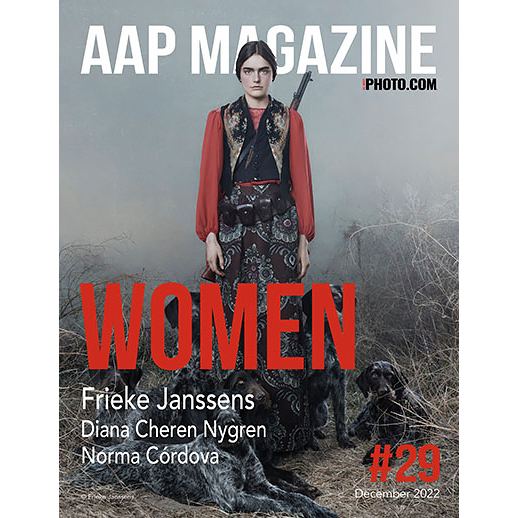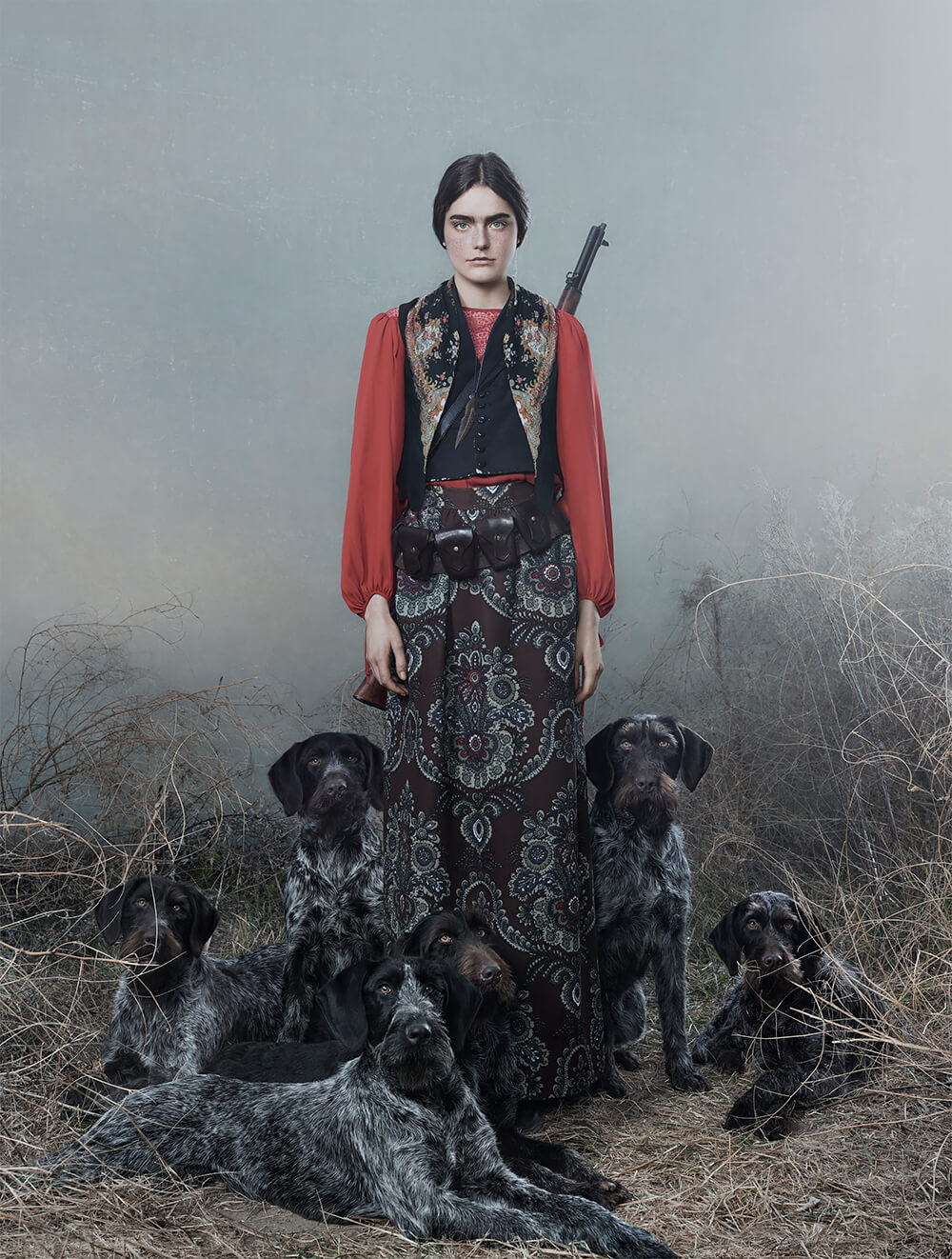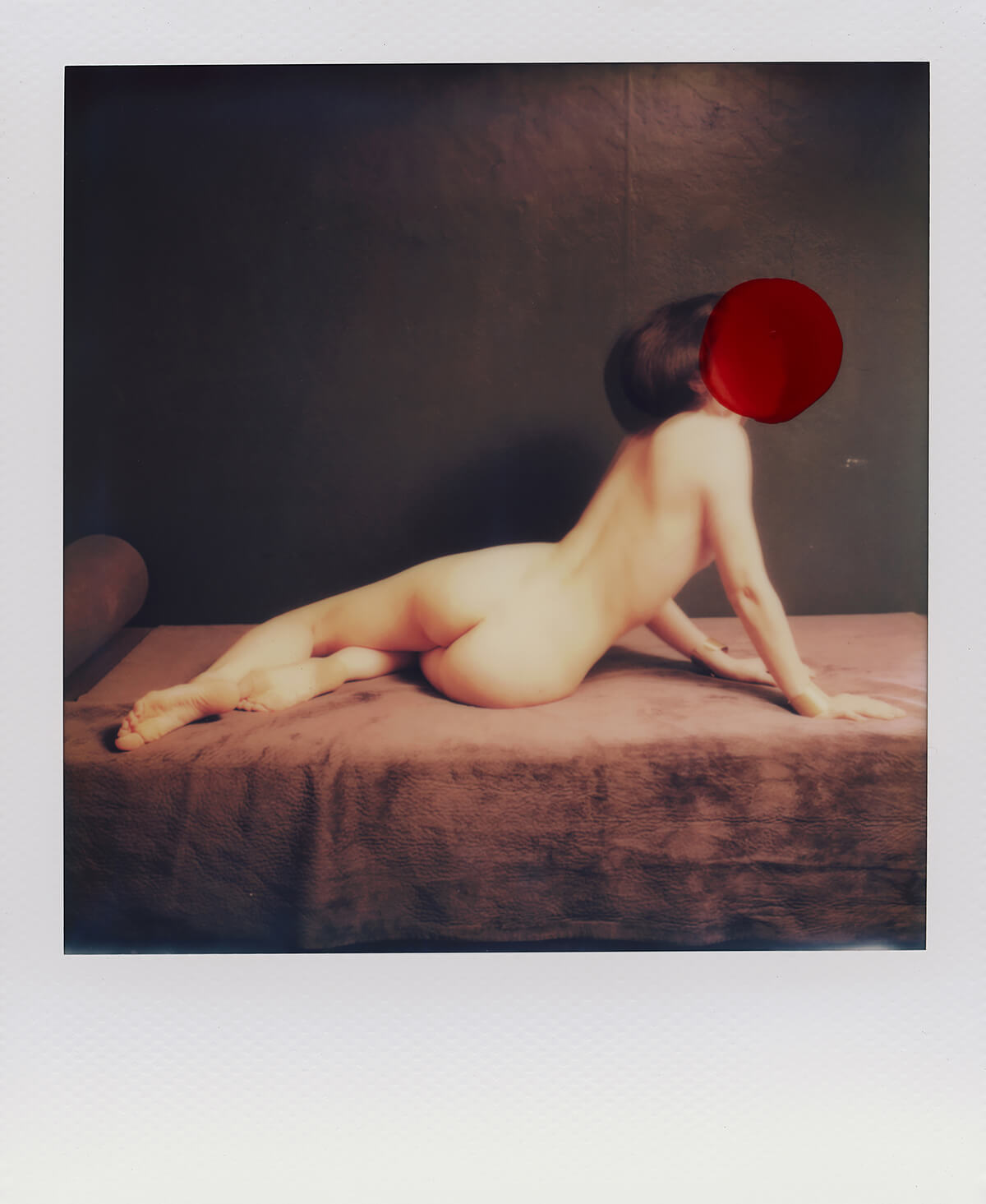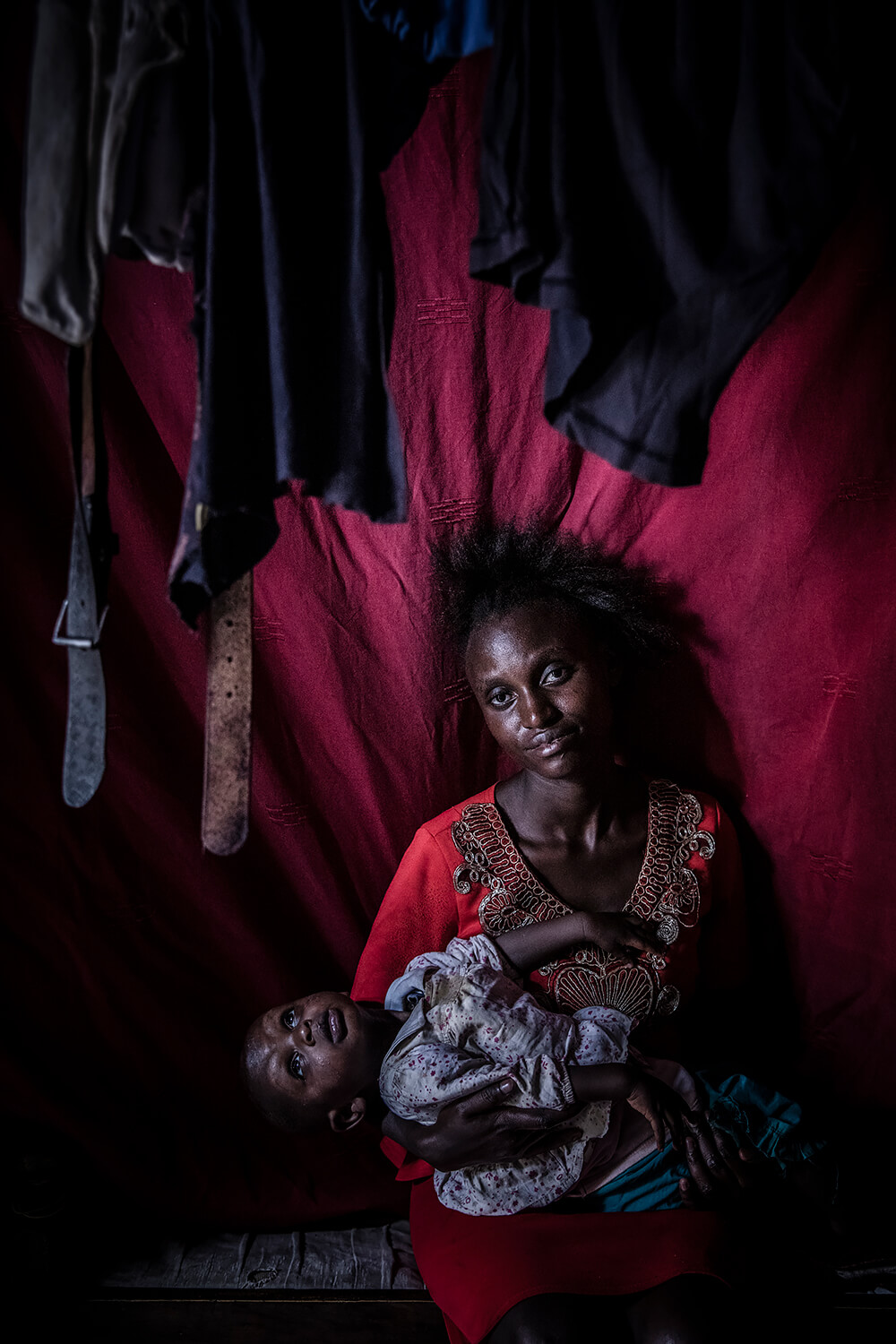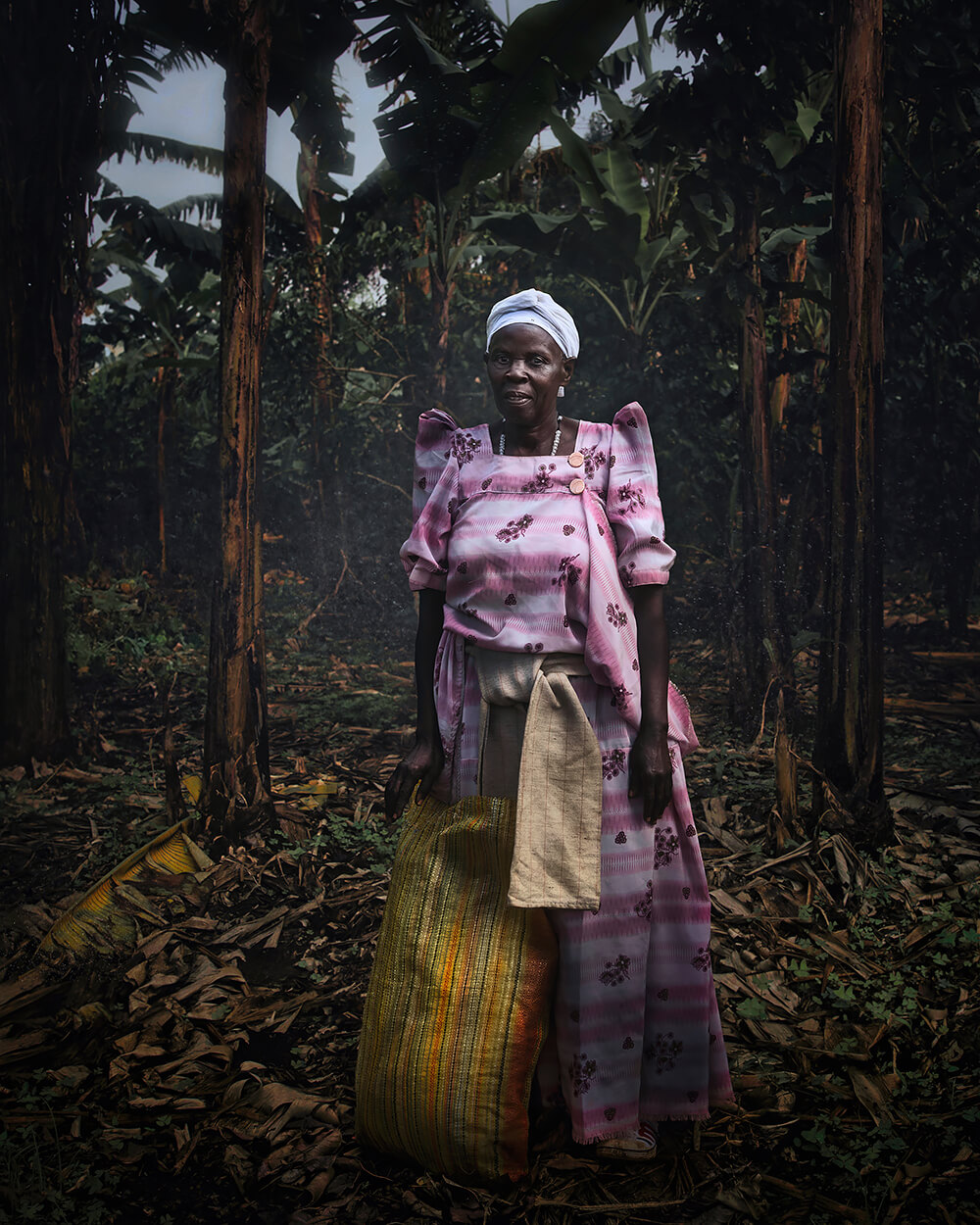Women have a complex and multifaced history as both photographers and photographic subjects. In the early years of photography, women were largely underrepresented in the field, most practitioners being men. However, women were frequently the subjects of male photographers, who often used their images to reinforce traditional gender roles and societal norms.
As photography became more accessible and affordable in the late 19th and early 20th centuries, more women began to take up photography as a hobby or profession. Nevertheless, women photographers still faced barriers and biases in the field, such as discrimination in the art world, lack of representation in exhibitions and museums, and limited access to education and resources.
Despite these challenges, many women photographers made significant contributions to the field throughout the 20th century, they used photography to challenge these stereotypes, and depicted women in a more diverse and empowering way.
In recent years, there has been a renewed interest in the work of women photographers and the representation of women in photography, both as subjects and as photographers. Scholars, curators, and photographers are working to uncover and showcase the work of women photographers from the past, and there has been a growing awareness of the importance of diversity and representation in the photography world.
This 29th edition of AAP Magazine sought, not only to acknowledge the strength, beauty and resilience of women, but also their artistic poetry and talent as demonstrated by the 16 women photographers selected.
The 24 artists featured in this edition, regardless of gender, gave us - through their different approaches and techniques - a powerful tribute to women.
Although choosing the winners was undoubtedly difficult, we hope you will all enjoy this stunning group of remarkable photographers.
The Winner of AAP Magazine 29 Women is Frieke Janssens (Belgium) with the series ‘Dianas’
Having built a solid reputation in staged, concept-driven photography, in her
new series Frieke Janssens questions the feeling of being a single woman and the
search for a lover as a kind of hunting. By introducing the theme of Diana, the
ancient Roman goddess of the moon and patroness of hunting and virginity, the
photographer engaged a string of luscious top models to pose for her as Dianas.
All of the models are distinctly feminine and tall referring to the height of
Diana’s stature. They carry typical attributes - be it a lunar crown, a wood
stock air rifle, a robust bow, a mighty, dreadful eagle or a herd of hounds. The
huntresses are often adorned with leather boots, exquisite garments and eyecatching
jewelry made of feathers. The women are pictured in the silence of the
early, misty morning, surrounded by a woodland pond or grass, reed and wild
plants.
Known for her enduring commitment in the creation of uncanny, narrative stills,
Janssens makes fascinating picturesque tableaux. The bodies of the Dianas are
like statues, breakable or rather detached and rough. Most of the models have a
strong, venturous, inaccessible appearance. However an underlying refined
fragility is always near. With their daunting gaze they look like the opposite
of a submissive, spineless woman. Others conceal a more servile, compliant
attitude. They seem to prefer a silent hunt. They evoke impenetrable mystery.
The series creates a beautiful synergy between both.
With their female vigour, the mythological figures govern the fates of all
things. Almost all men depicted in the series have been brought down. They are
fallen - reduced to a hunting trophy, a coveted prey. Except for the lonely
black man in the wood. Without any possibility of resisting the divine will, he
seems to be hiding for the death that one of the Dianas will bring upon him. He
is no longer the master of creation. He has become a creature in itself hiding
away from the inevitable.
© Sofie Crabbé
Frieke Janssens' Website
Frieke Janssens on Instagram
All About Frieke Janssens
The Second Place Winner is Diana Cheren Nygren (USA) with the series The Persistence of Family
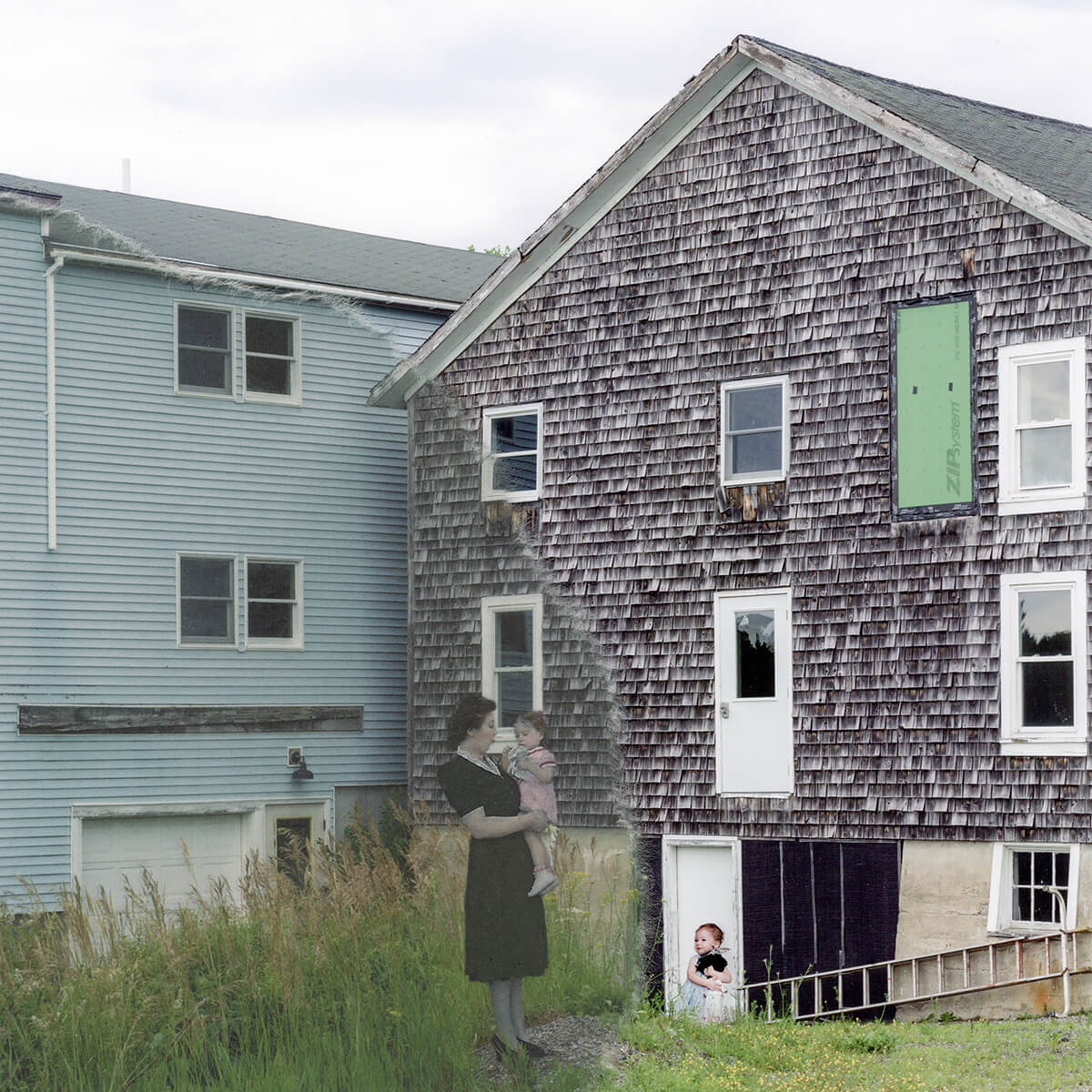
Grandma's Doll © Diana Cheren Nygren
My mother passed her beautiful porcelain doll down to me, Delicate Dolly. I got into heaps of trouble when I gave Delicate makeup with some magic markers. Thirty years later I passed her down to my own daughter who wasted no time in pulling off one of her arms.
Our connections to our ancestors and our descendants often feel stronger than connections to those around us. I often wish my children knew my grandparents. These are portraits of my children as the product of a history of lives lived and intertwined, each effecting and shaping the other.
This series interrogates the role of family relationships and history in shaping our sense of ourselves and our place in the world. I have composited my old family photographs, photographs I took of my children as they grew, and images of the New England landscapes in which my children and I grew up. With these compositions, generations reach for each other across time. I exist in the tension of the space between those who came before me and those who will come after. The project is driven by a longing for connection that makes real those things I hold dear, and by an anxiety around individual responsibility in passing on family history.
Diana Cheren Nygren's Website
Diana Cheren Nygren on Instagram
All About Diana Cheren Nygren
The Persistence of Family
The Third Place Winner is Norma Córdova (aka, shesaidred) (USA) with the the series ‘Red is the Color of…’
I started with a single red dot then a smear and then the redness just continued from that point on… the women in these images symbolize the goddess of love and fertility. females have only so many oocytes upon birth whereas males can supply their contribution till death…. the red dots floating represent the oocytes and the decisions that may arise upon fertilization of those eggs. fertilization is complex and can become more complex depending on circumstances, and a female can find herself fertilized against her wishes… only “she” should decide what is to become of her oocytes upon fertilization...
shesaidred's Website
shesaidred on Instagram
All About shesaidred
Merit Gallery
Vytenis Jankunas (USA)
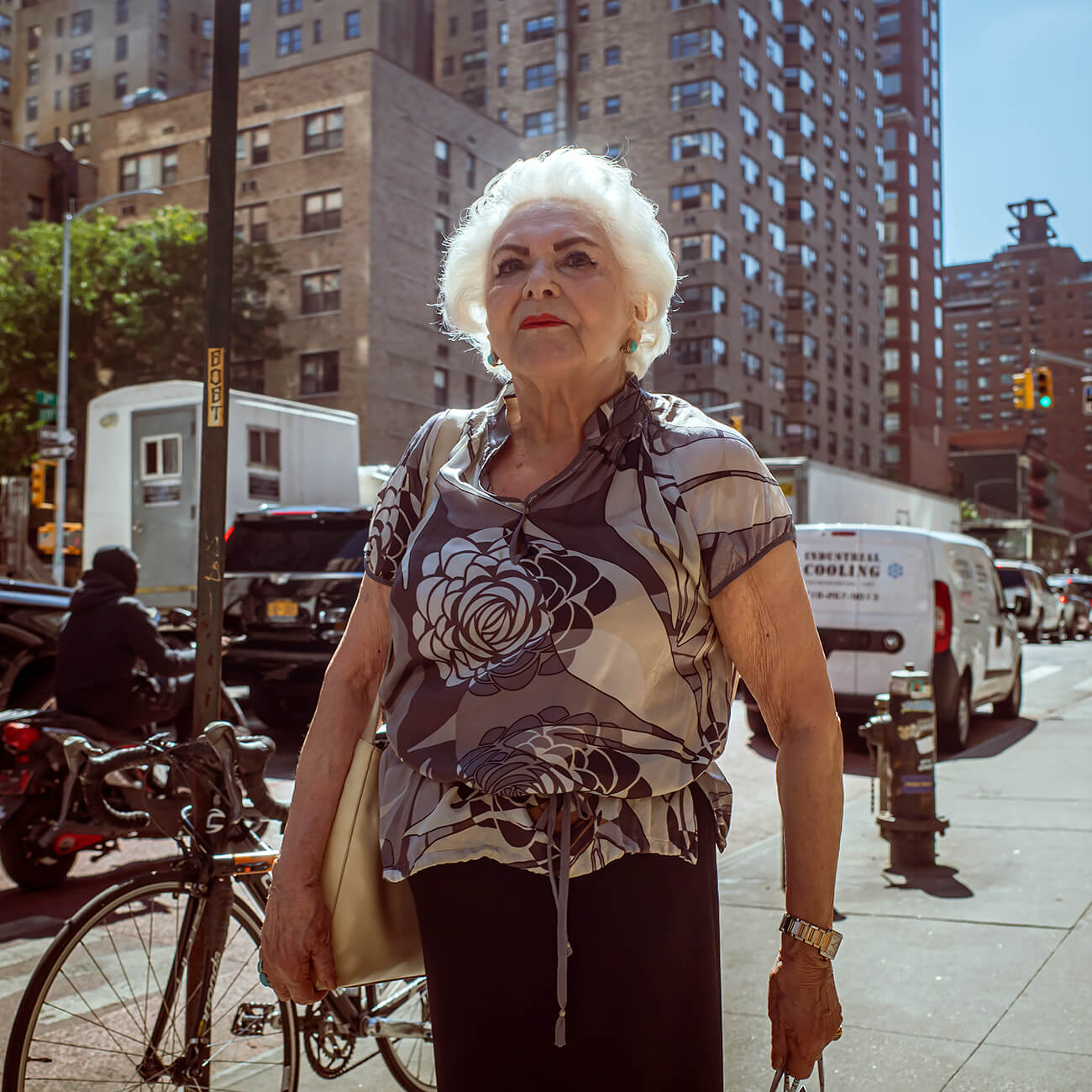
August Afternoon In Uptown Manhattan from the series 'Face Of My Town: Urban Portraits' © Vytenis Jankunas
My latest photography project is called “Face of My Town: Urban Portraits - NYC Edition.” I have lived in New York City for over 25 years and always been asking myself: what keeps me here for so long? Is it cultural richness, or the career opportunities this city can offer, or maybe the ability to experience most of what the world can offer without leaving the city? I guess everything at once, but one thing became certain to me: I fell in love with the people, the way they look, the way they dress, the way they talk. It is hard to find another city in the world with such, or similar diversity within its population. This is what my project is about, just walking the streets and capturing people with my camera religiously. The result is something in between street photography and portraits of people in the vulnerable state of everyday life.
All About Vytenis Jankunas
Xavier Blondeau (France)
The twilight slowly makes us discreetly discover the curves of a body, like the river polishes the stones, the wind shapes the tree tops. We perceive the delicacy of the skin grain and the details of a life story on this naked body. But the important thing is what we can't see in the obscurity that covers the essence of women’s intimacy.
All About Xavier Blondeau
France Leclerc (USA)
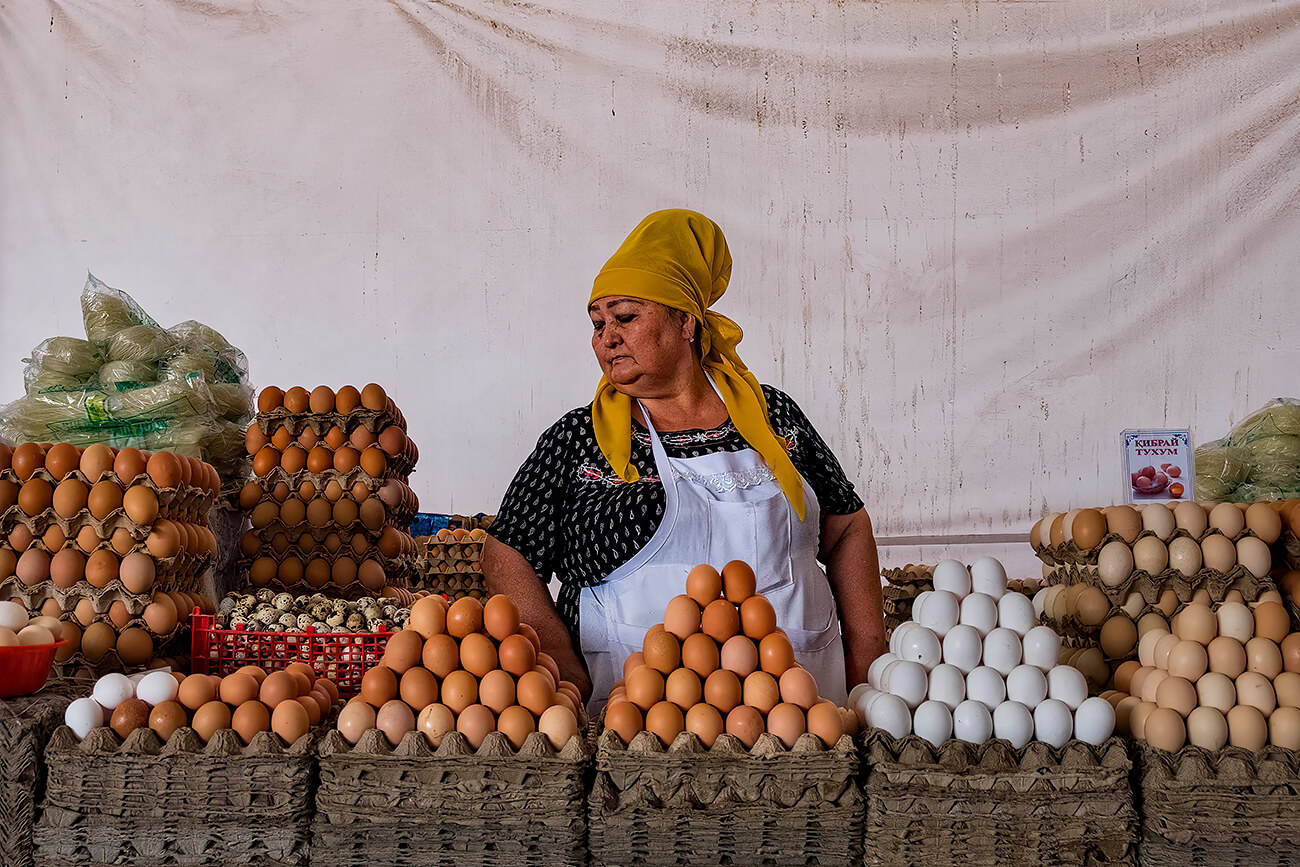
Chorsu Bazaar, Tashkent, Uzbekistan from the series 'Sisterhood' © France Leclerc
This project attempts to illustrate that despite the diversity seen worldwide in people's appearance, traditions, and norms, most of us share strong common core values. I have found that there is no better place to see these commonalities than by looking at women's lives. Women everywhere are driven by the same concerns beginning with a love for their family and community. Though daily activities vary dramatically from one part of the world to the next, I have seen women working hard everywhere, showing incredible determination and strength, to provide a better life for their people. We are all part of the same sisterhood.
All About France Leclerc
Domenico Iannantuono (Italy)
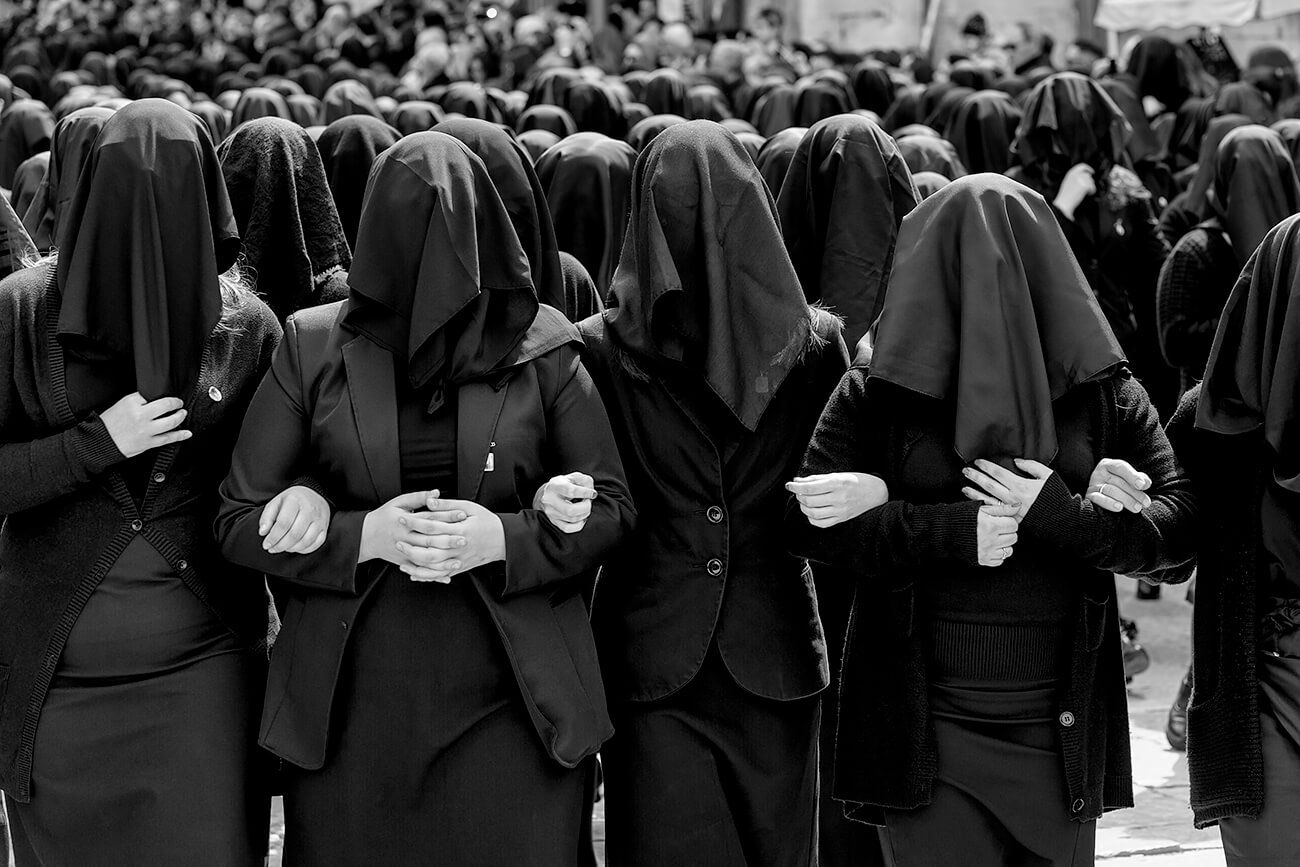
Women in black from the series 'Desolata' © Domenico Iannantuono
The suggestive choir made up of over 350 women dressed in black and with their faces completely covered, accompanied by the local musical band, sings the Stabat Mater by Jacopone da Todi express all their torment and pain.
The project is part of a broader research concerning the intensity and passion with which some populations of Southern Italy live their religious faith during Holy Week.
All About Domenico Iannantuono
Jaclyn Cori (USA)
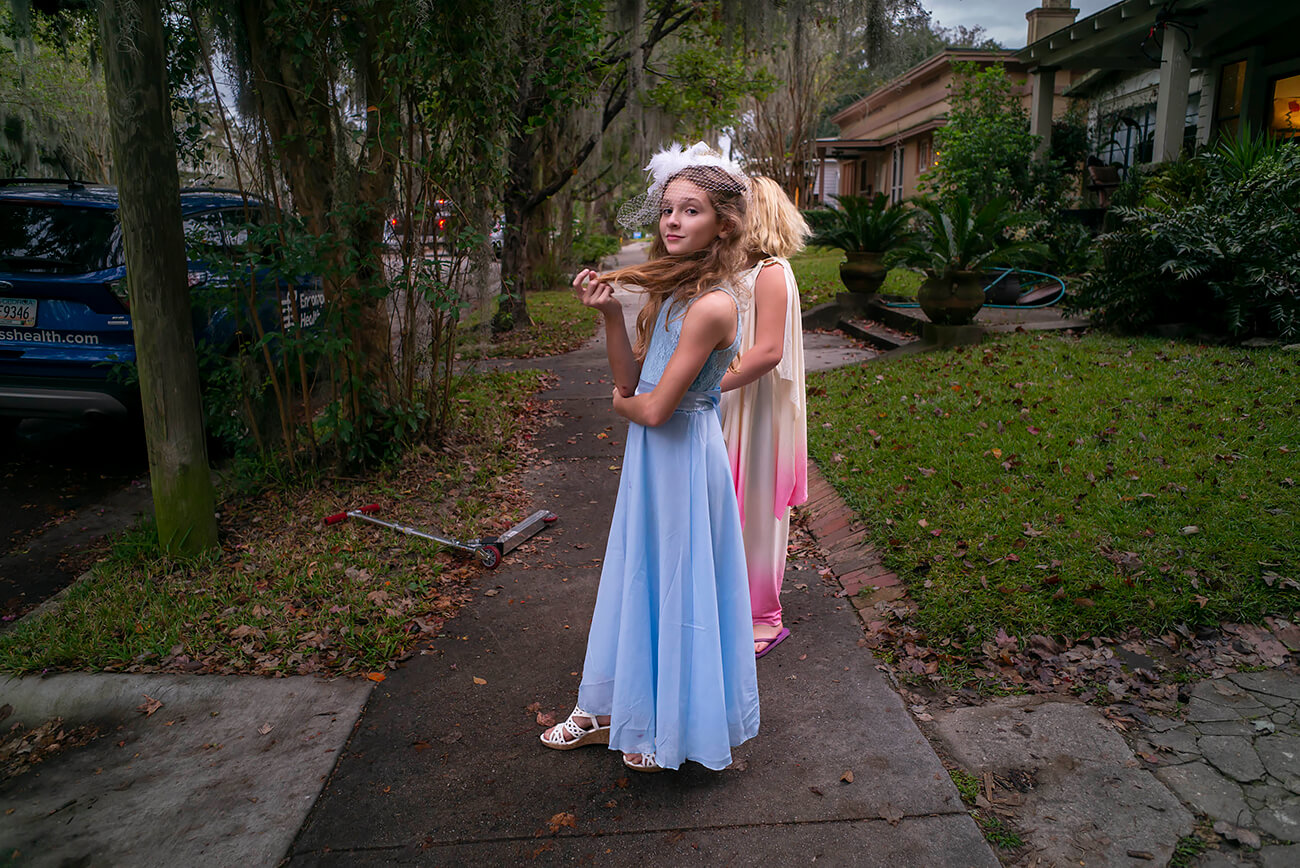
Sass from the series 'Born on the Same Day' © Jaclyn Cori
Born On The Same Day is a poetic family album documenting the lives of my fraternal twin daughters. Every morning they open their eyes and there is “the other one”, their twin, their castmate. Everything around them began the same, yet they are entirely unique.
This photograph, “Sass”, displays a confident, flamboyant girl approaching the right of passage from preteen to teen.
All About Jaclyn Cori
Lisa Murray (Australia)
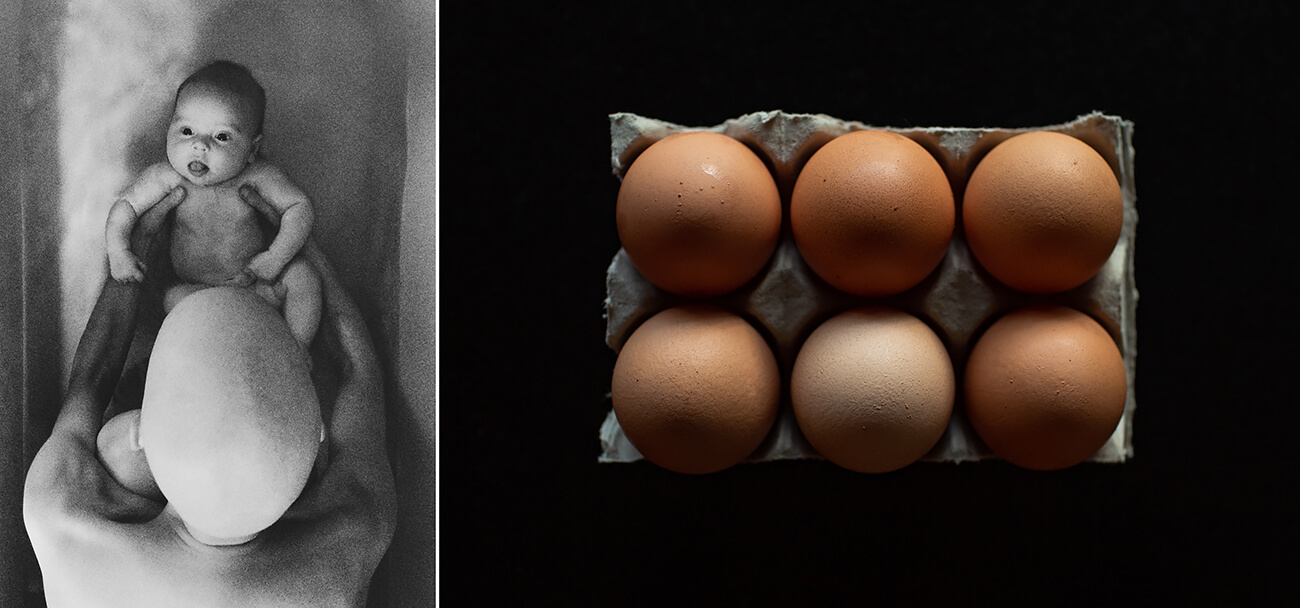
Egg Head from the series 'Through My Child’s Eyes' © Lisa Murray
When time is measured in treatment cycles and how much hair the other ‘egg heads’ have who
surround me in oncology…
This image forms part of a larger body of work entitled ‘Through My Child’s Eyes’.
The series is a photographic collaboration between mother and child. It is composed of
re-created archival photographs originally taken by my five-year-old son, Griffin, paired with
my own current reflections of the time. It spans eight years and chronicles a chapter of time
when new life and near death momentarily sat side by side.
All About Lisa Murray
Praveen Emmanuel (India)
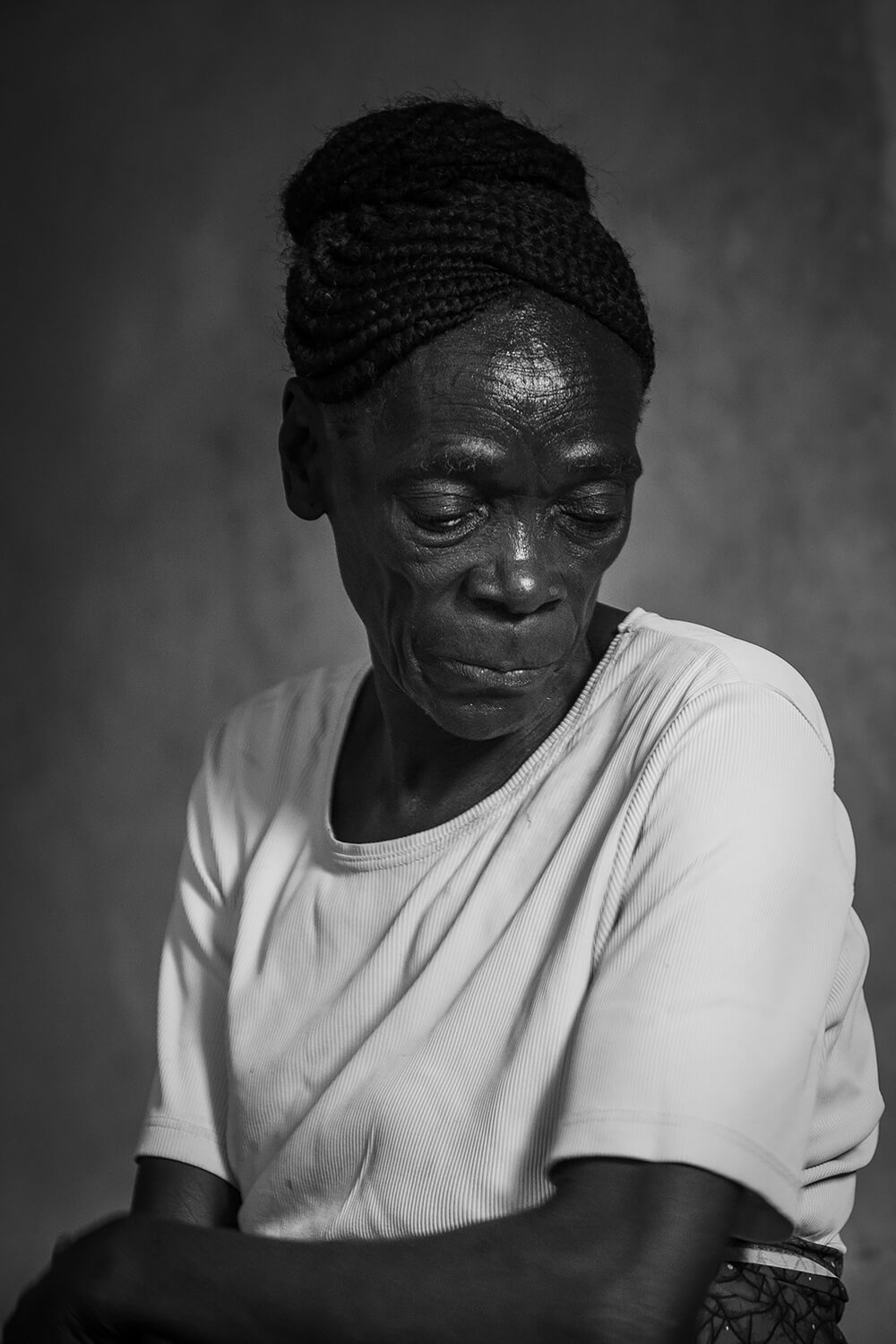
She is Strength ©Praveen Emmanuel
I met Josephine in the inner-city slums of Lusaka, Zambia. She was sharing how she lost her husband, daughter and son-in-law to HIV/AIDS. Without any job or source of income she is now faced with taking care of her grandchildren. There was a brief moment when she stopped sharing and I was able to capture that moment. Although this image shows the sadness that comes with the situation, for me, Joesphine reflects the courage and strength that is needed to face them. This is a powerful visual representation of the human spirit.
All About Praveen Emmanuel
Landry Major (USA)
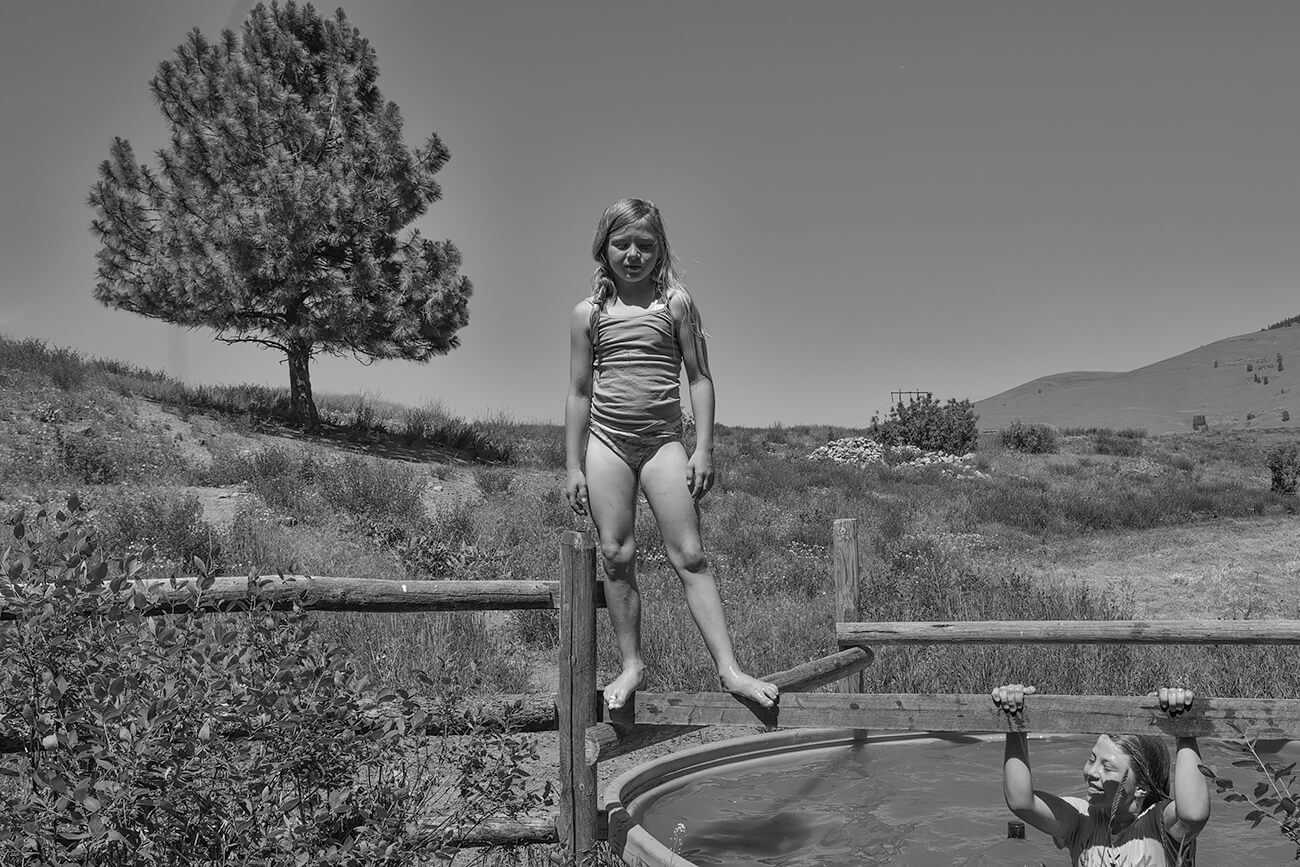
Keepers of the West © Landry Major
My childhood summers were spent on a family dairy farm in Nova Scotia. Waking at dawn and herding cows alone in the field, where the only sounds were the birds waking and the gentle murmurs of the cows. The smell of fresh milk and fields of grass were the touchstones of my youth. The barn where I helped my uncle hand-milk the cows is now gone back into the earth.
My ongoing series Keepers of the West took me back to fields at dawn, this time on the family-run ranches of the American West. Visions of the West have long been central to our culture, but the way of life of the cowboy and the family-run ranch is fast disappearing.
Over half of all family-owned ranches in Montana are run by people over 65 and many of their children are not choosing to remain in ranching.
It is because I recognize these struggles that my series celebrates the beauty of family-run ranches. The lives of these people are framed by hardship, yet they thrive in the simpler way of life that remains their routine, and in the stewardship of the land and the animals they tend.
Over the past four years I have witnessed the strength, determination and commitment of these families to continue this way of life and pass it on to their children. The images are made up of the places, people, and creatures that have welcomed me into their world to remind us of the arresting moments of grace and beauty found in a life lived under the wide-open western skies.
All About Landry Major
Ruth Lauer-Manenti (USA)
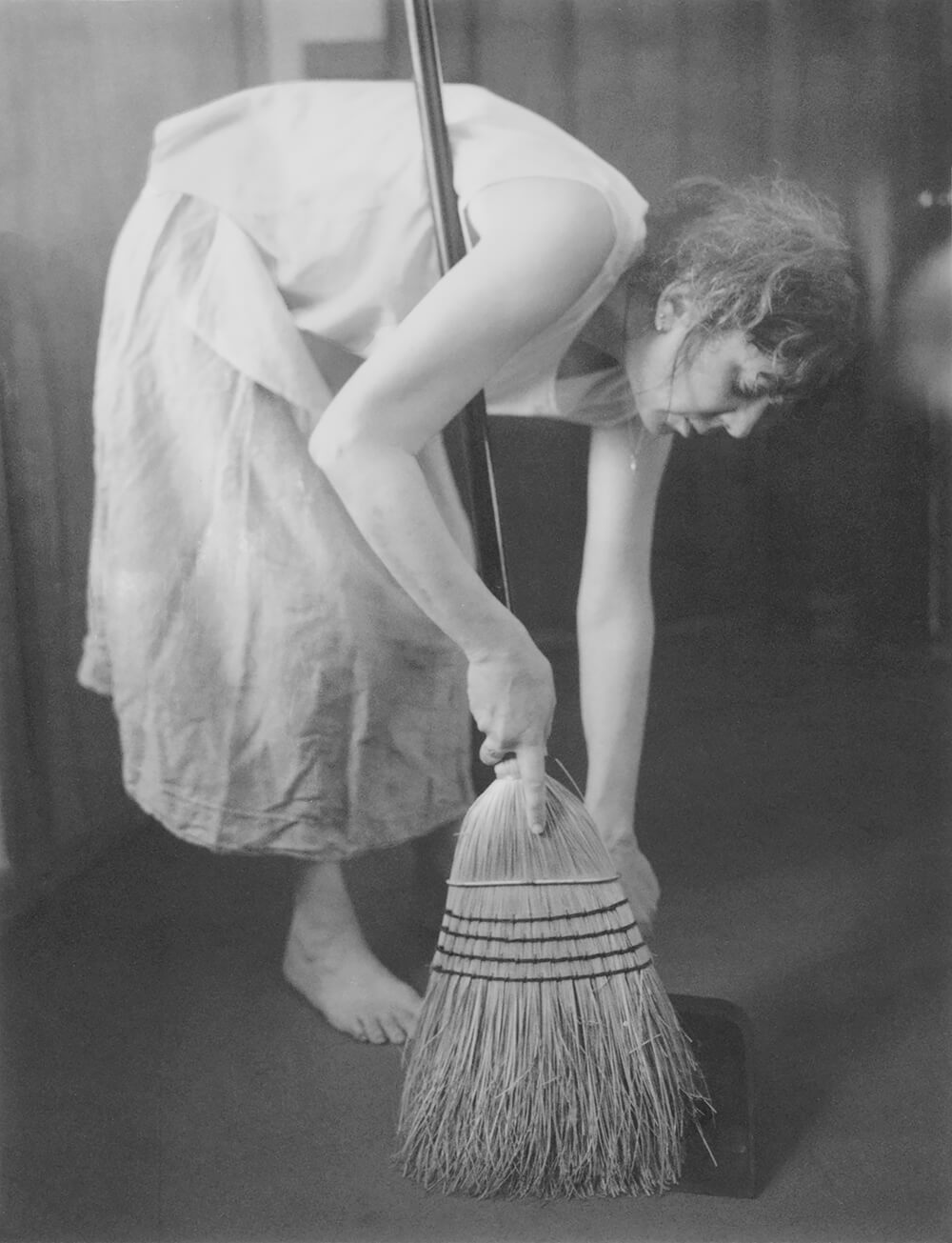
Sweeping from the series 'I Imagined It Empty' © Ruth Lauer-Manenti
I live in a dream house built in 1940 too small and weary to be considered desirable. Life is going by quickly. I have lost people close to me and not, in ways unexpected or if expected, naively I did not see coming. I know I will not live in this house forever. Hopefully it will outlive me, but I wonder if part of me will outlive the house. In this time of instability, especially during Covid, despite so much suffering, many realized how much value and mental benefit could come from household activities, rejuvenating the idea of home and health. There was hope this would bring positive change. With a sense of the collective sadness of the present times, I’m interested in sharing a poetic orientation towards healing.
All About Ruth Lauer-Manenti
Cara Weston (USA)
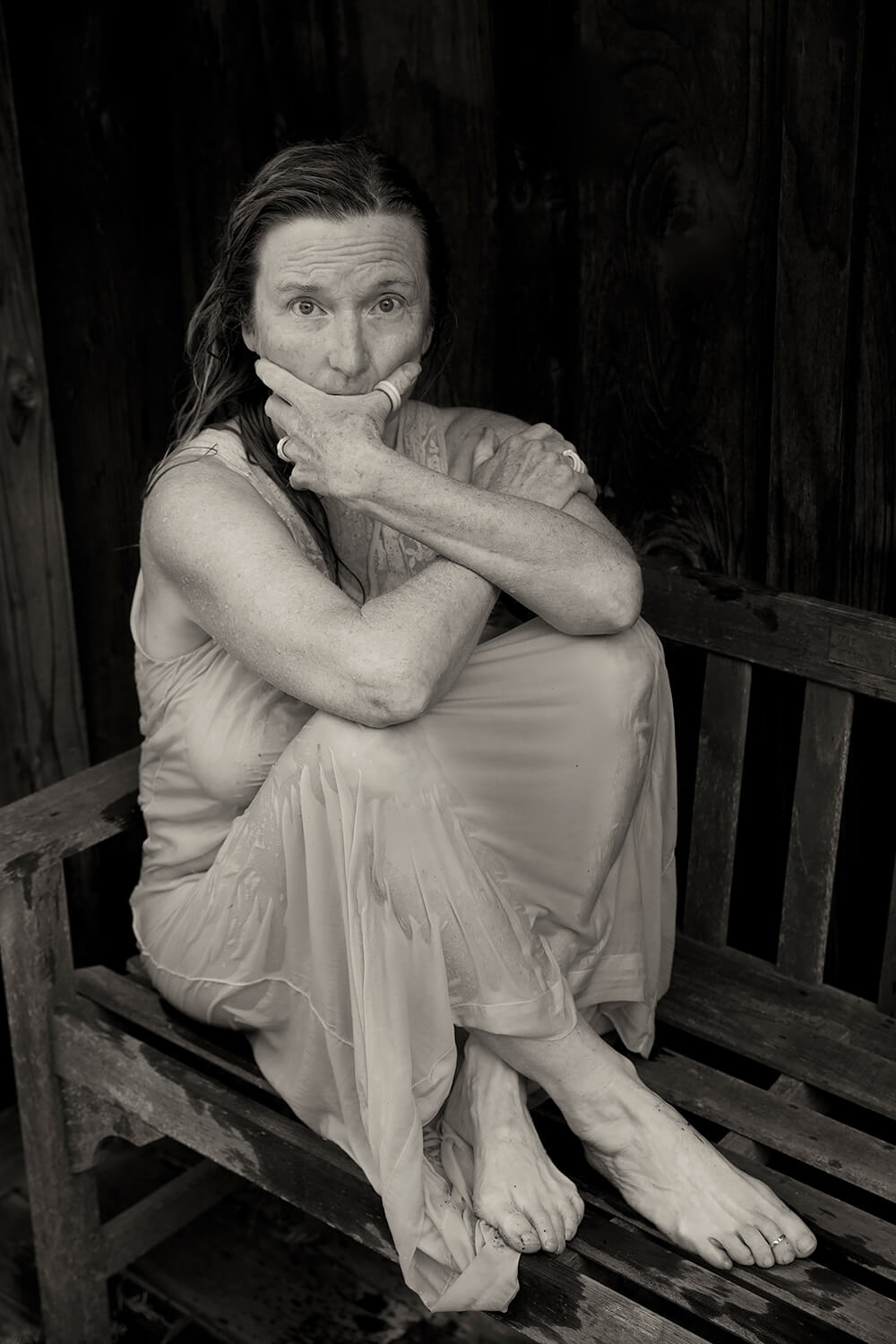
Being 60, Big Sur, 2015 from the series 'Women of Strength' © Cara Weston
This photograph was taken when my childhood girlfriend turned 60.
She has me photograph her every 5 years to document how her body changes.
Most of these images are of her nude. This photograph was taken after the photo shoot while she was resting and drying out in the sun. There is so much being said in
her face. This series is part of a series featuring all the women in my life that embody strength in life and living.
All About Cara Weston
Mark Chew (Australia)
Over three million people live in the settlements of Mukuru and Kibera on the outskirts of Nairobi. In terms of land area to population, they are perhaps the most crowded places on earth. Extreme poverty, malnutrition, HIV, cholera and sexual abuse are prevalent.
UKO FITI is an attempt to understand the role that women play in these communities and to show the importance of respecting and harnessing their power to make change.
Mark Chew is a working Photographer based in Melbourne, Australia,. His current clients include Australia’s leading universities, peak tourism bodies, airlines, corporations, hospitals and charities but despite having a successful career in commercial photography for over 30 years, he has always been aware that the important work is usually unrelated to making a living. As time goes by, the attempt to return to the values of authenticity and truthfulness becomes more important. But it’s not a linear journey. As we progress down this path we find we are really only arriving at the place we set out from many years before. The danger for documentary photographers is that they can become didactic. This is what I saw, so this is what you should think. In his personal work Mark attempts only to ask the questions, and in finding a response, the viewer is hopefully in some way enriched.
Stéphanie Probst (Switzerland)
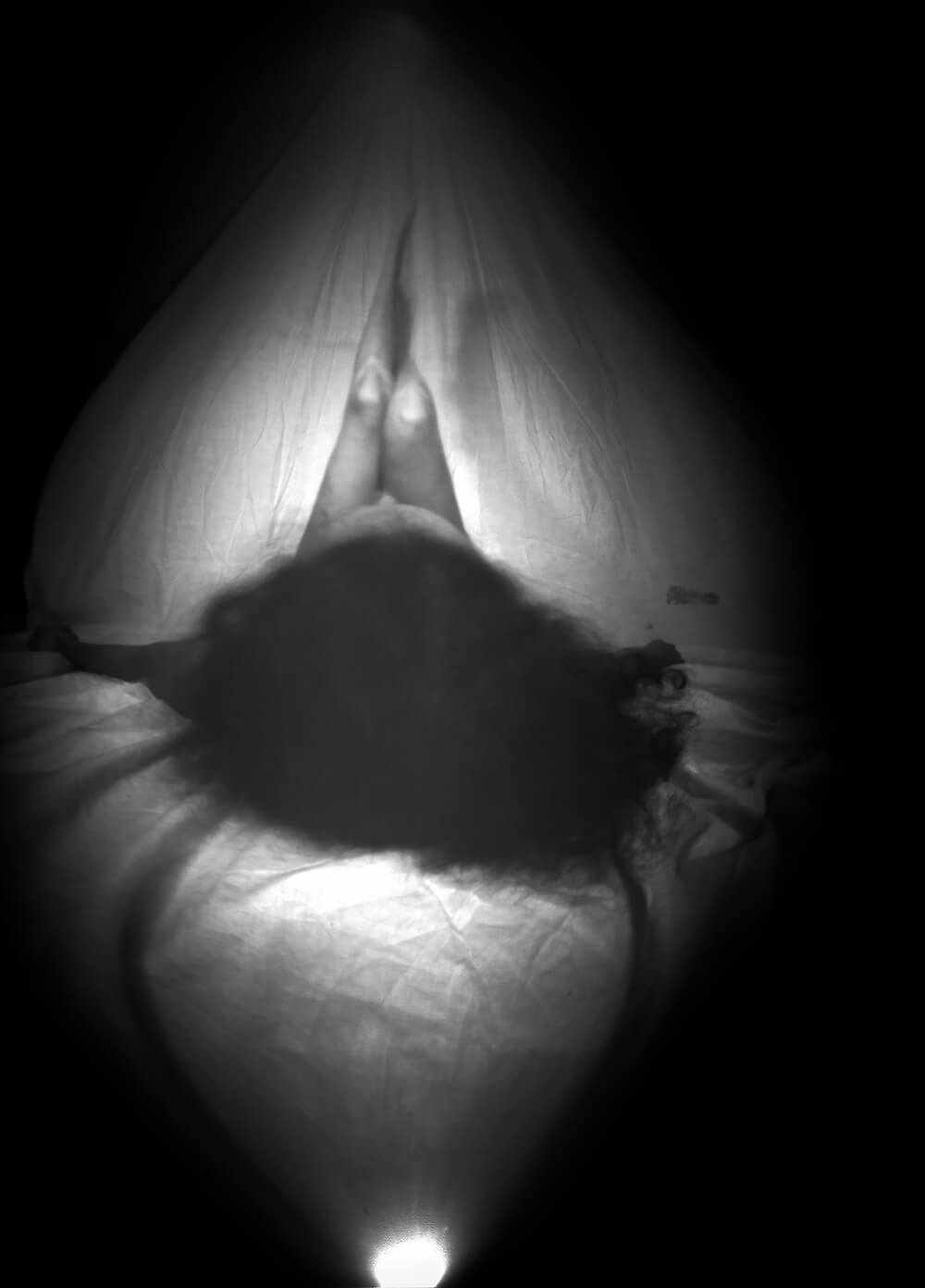
Camera Intima © Stéphanie Probst
Camera Intima is a series of portraits of women between 23 and 53 years old. I am one of the women of the project.
It begins with an open discussion between the artist and participant, inspired from the “feminist talking circle”, a practice to recover your own experiences and express freely. This creates a space in which ideas and emotions can be shared in a safe environment. Then, the participant chooses to take part in the photographic project, or not. They give consent for me to use their words and pictures.
As I recently experienced health issues, my body changed a lot. I realized that I never really knew what is «normal», what is a normal body, or what is a normal relation to it. I explore this questions by inviting others to have this conversations.
Participants join the project upon invitation : it’s open to anyone identifying themselves as woman, or born as woman. Each step is based on confidentiality, caring and consent.
The elaboration of the picture is shared between the artist and participant. Exposure time is 5 minutes. It’s a time of reflection, it’s also a performance.
I use pinhole because it needs time, meaning it’s a moment of the person, not a snapshot. Long exposure is accurate because it’s an accumulation, a slice of life, where you breathe and live. It brings some blur, some distortions, induces a reverie-kind-of-state in viewers. It also helps to have an equal relationship because nobody sees exactly what picture is taken.
After the shootings, a selection of sentences from the participants are made, including the artist. The texts should accompany the pictures, being projected, spoken, or recorded and played around the images. The purpose is to make a multi-portrait of all the women that participated, mixing their voices.
When we look a portraits, we look for similarities or differences, we make links with ourselves. We act in front of portraits like with mirrors and we learn with others. Viewers can look at the pictures, read the texts and think about their own feelings, experiences and relation to their bodies. It could change the way we see ourselves and challenge the standards we have, to continue the series.
The work is still in progress, it can grow in time.
All About Stéphanie Probst
Orna Naor (Israel)
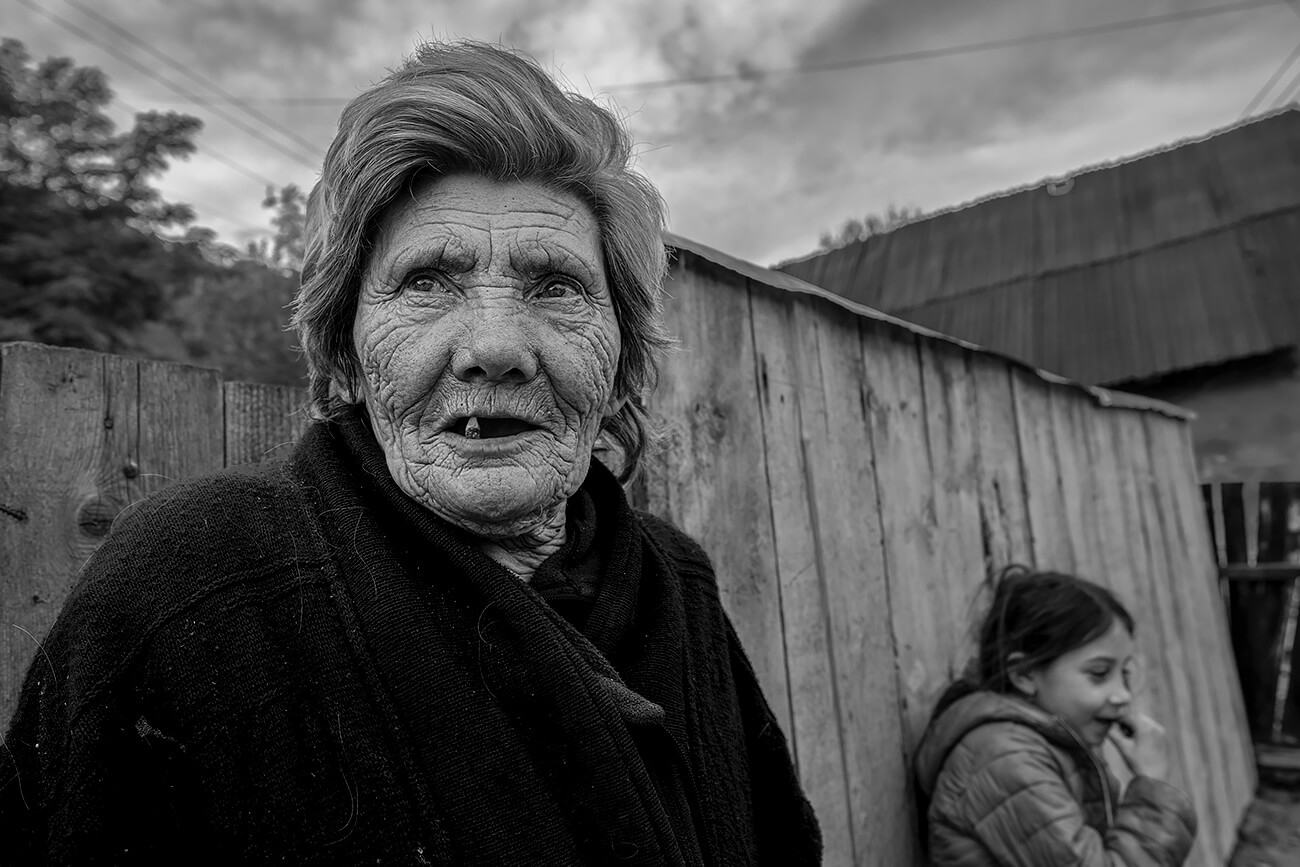
Women of the world, Romania from the series 'Beauty and Power' © Orna Naor
Through my travels around the world, I'm always fascinated by the beauty in the power of women and the power of their beauty.
This collection contains pictures from Israel, Brazil, Romania, New York, Crete, Cuba, China and Guatemala. All of them, with all their expressions, strong and intriguing women.
All About Orna Naor
Ilaria Miani (Italy)
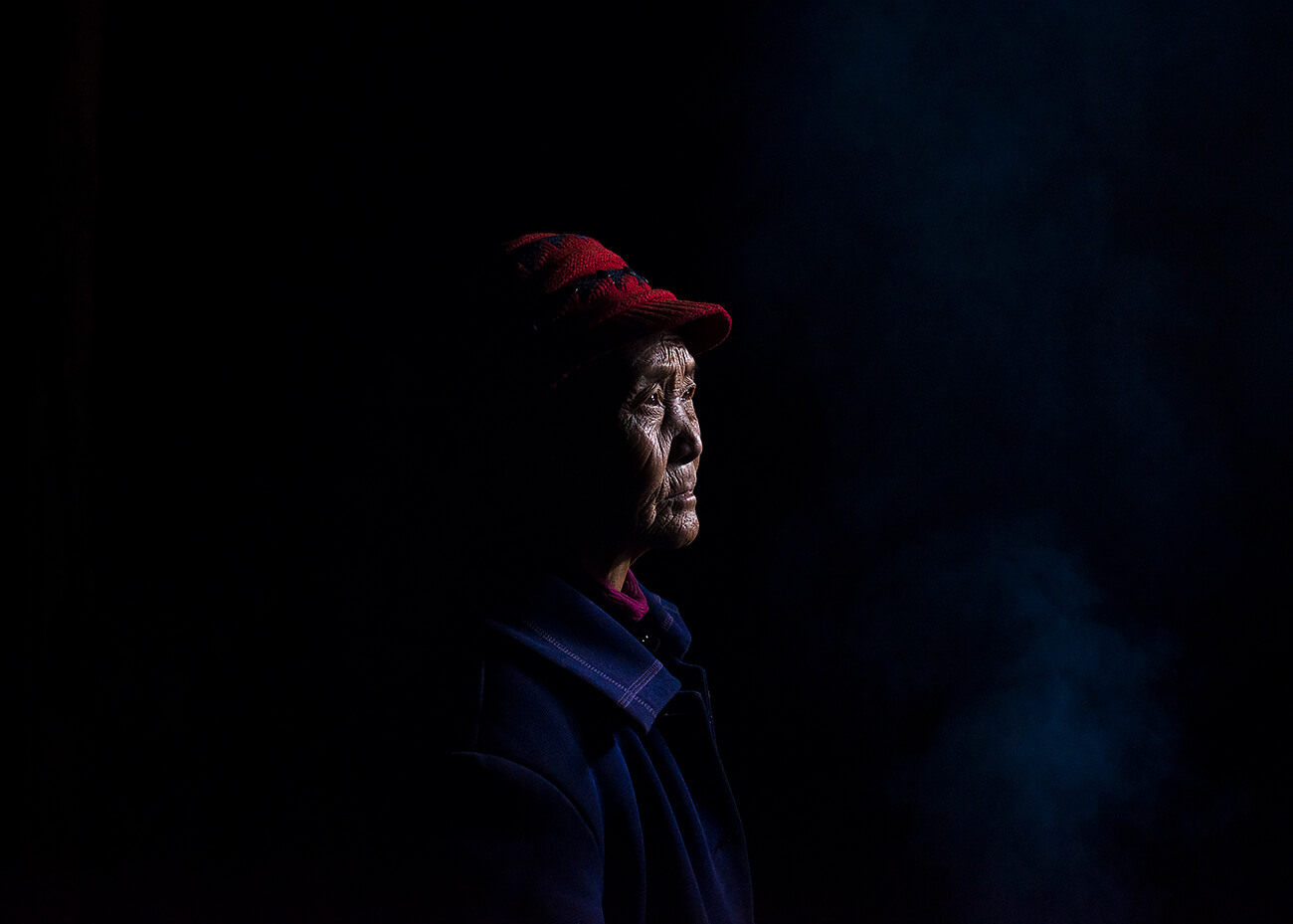
Searching the light © Ilaria Miani
uangxi Province, China. In a little village, this woman invited me to step in her house. A tiny, dark, spare house with the wall darked by the burning of a wooden stove, and with just a window from where the weak light of a cloudy day came in. The old lady while we were trying to speak bend toward the light as for get some kind of inspiration finding the right word that we both could understand.
Susanne Middelberg (Netherlands)
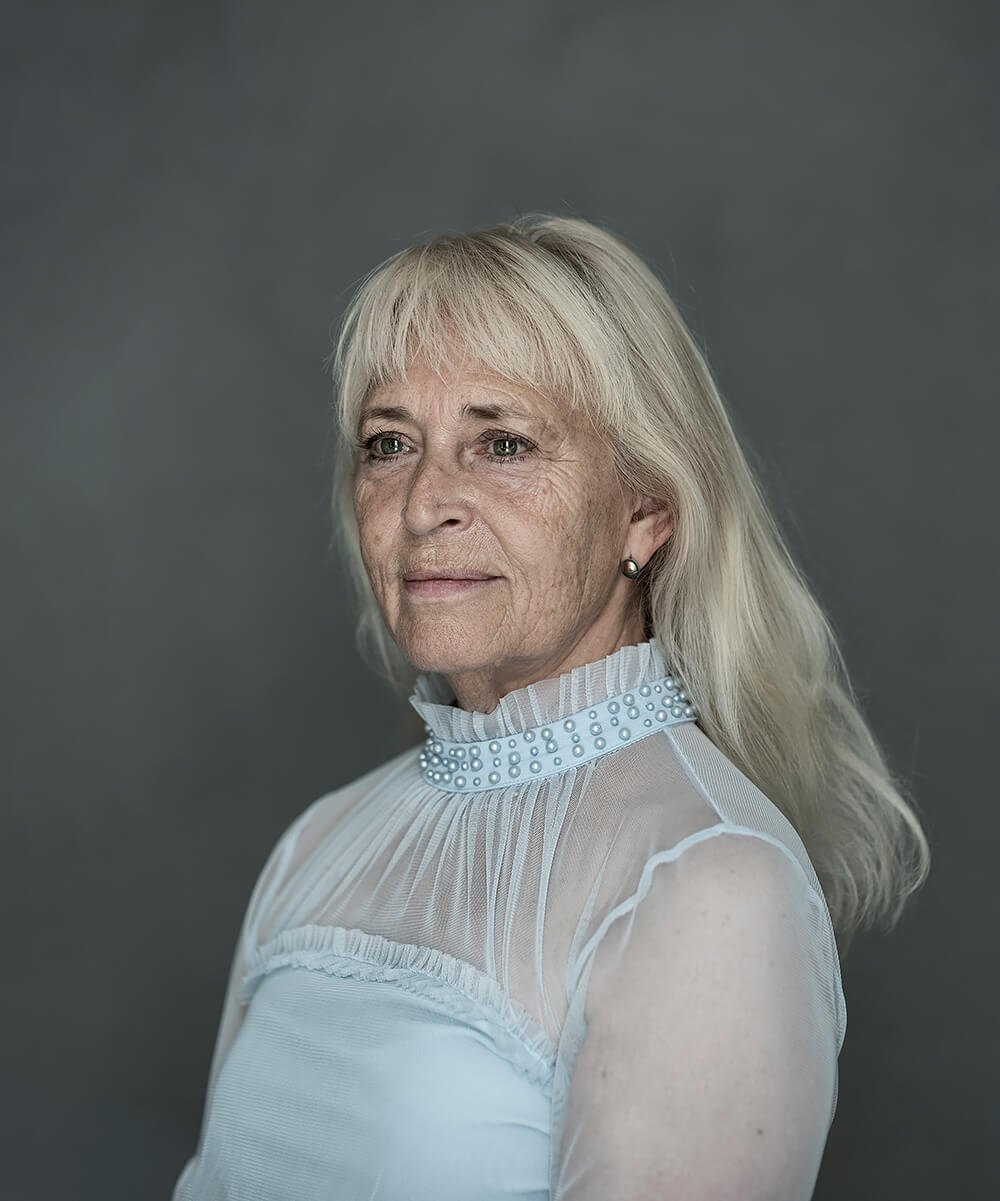
Frederiek Muller: actress © Susanne Middelberg
In my portraits I am looking for honesty and vulnerability. I believe that vulnerability makes us nicer human beings and that this makes the world a little more friendly and more understanding. People who show themselves vulnerable give the other the confidence that they themselves may be who they are.
I am most fascinated when I can see opposite qualities of a person at the same moment.
I find this exciting because people are complex. I hope that the portrait touches something of the viewer himself.
All About Susanne Middelberg
Julien Sunye (Netherlands)
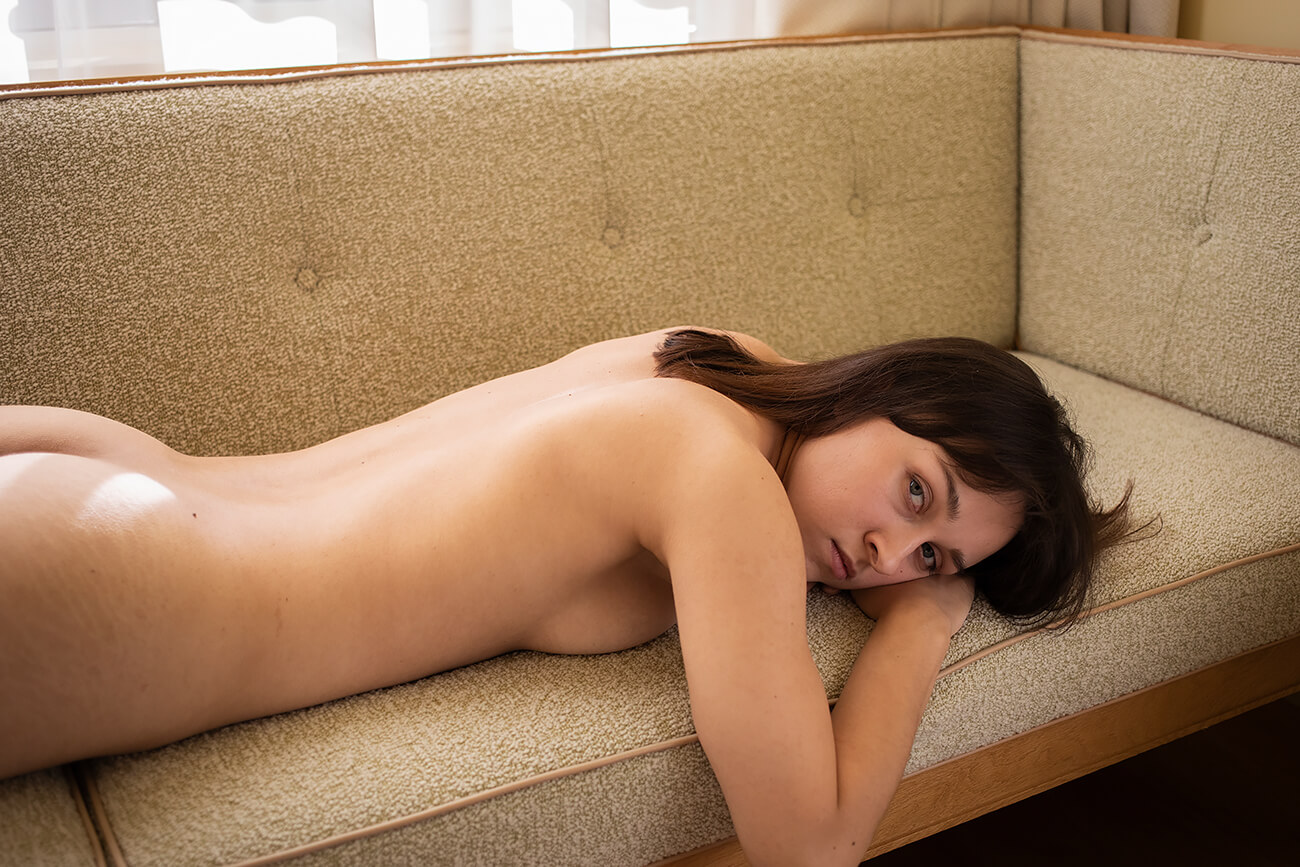
Portrait of Nina from the series 'Sunday mornings in Paris' © Julien Sunye
This project was initiated in 2017 to counterbalance the heavier theme I was exploring with Black Holes, which discusses violence and war. I started Sunday mornings in Paris with the idea to create something soft, gentle and beautiful.
I chose to render homage to the beauty of the female form which has inspired many an artist. This against the background of one of the most beautiful cities in the world.
The idea was to create images that give the feeling of a lazy Sunday morning after a jazzy night out, resulting in scenes varying from those that seem to come from a dream and some that tend more towards portraits.
It is key for me that the models in the photograph own their own bodies and their own sensuality and not to project my own fantasies onto them. As a photographer I’m there to capture what arises in the moment, ensuring the compositions, backgrounds and light are all perfect when I hit the shutter. I never push for a certain pose or attitude, instead I wish for the models to feel somewhat free to be their natural selves or to explore themselves what feels right. This way I keep the photographs as natural as possible.
I didn’t want the results to be visually overwhelming. Instead, I wanted to create calm yet powerful images that appeal to an atmosphere of times long gone by whilst remaining timeless. By opting for this approach, the results are visually peaceful, even for the more sensual photographs in the series.
All About Julien Sunye
Joseph-Philippe Bevillard (Ireland)
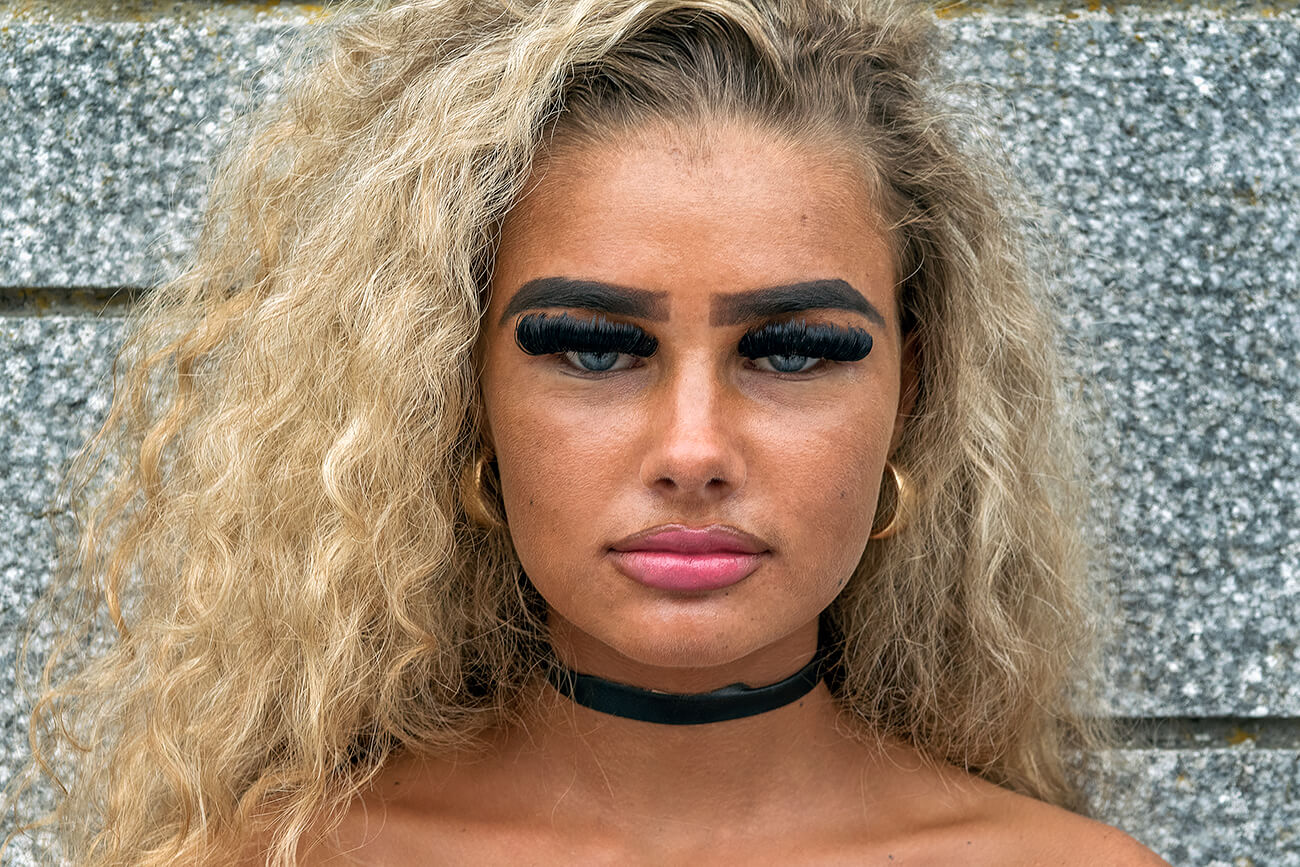
Portrait of an Irish Traveller Woman, Galway, Ireland 2022 from the series 'Irish Traveller Women' © Joseph-Philippe Bevillard
A teenage Irish Traveller girl attended at a popular horse fair in Galway, Ireland. Like many girls and women from the travelling community, they proudly wore makeups, hair extension to add volume, gel nails, false tan, eyelash extensions, large jewellery, high heels and elaborate clothings. Many are married between 16 and 18 years of age and have children within the first year of their marriage.
All About Joseph-Philippe Bevillard
Lynne Breitfeller (USA)
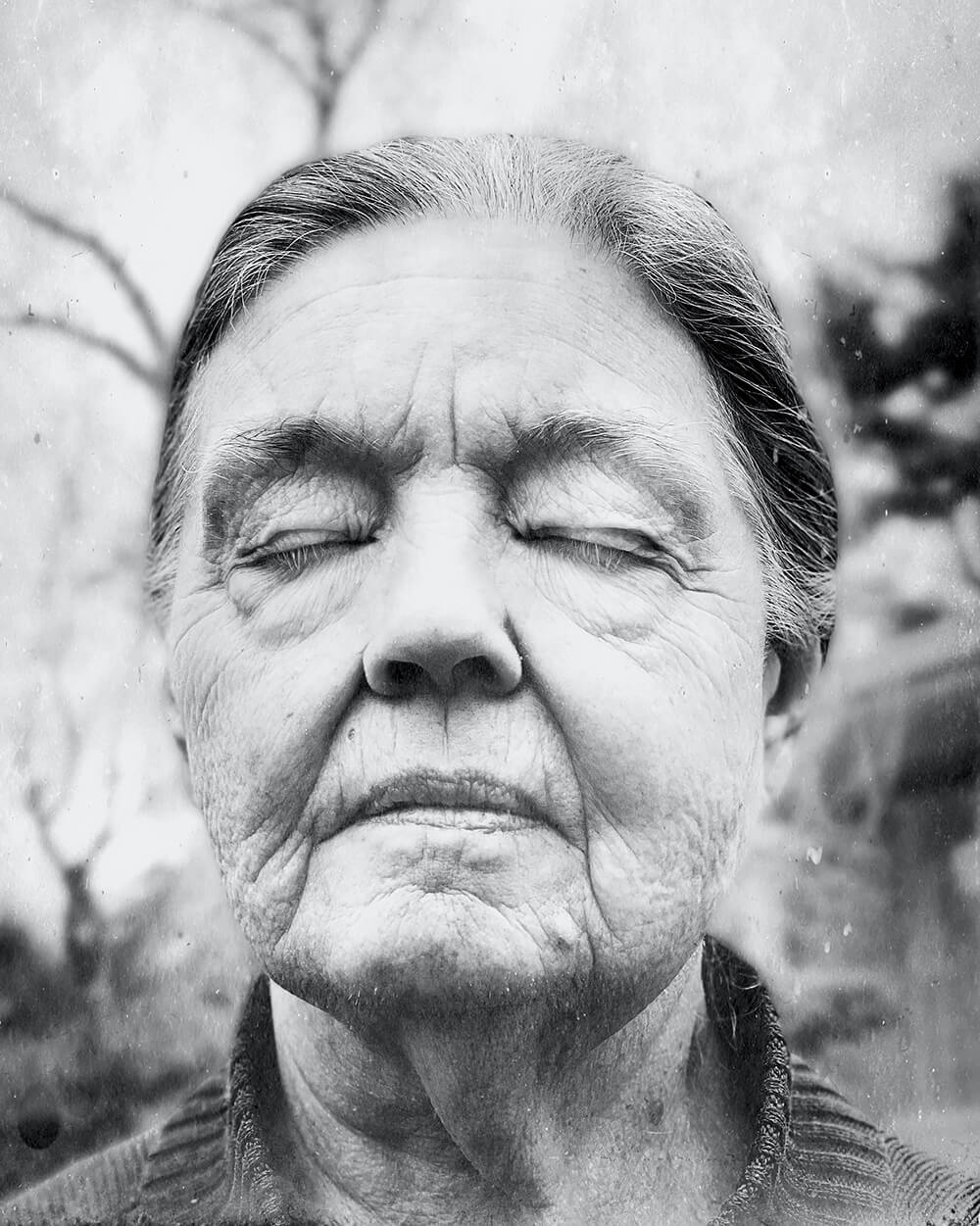
Eyes Closed from the series 'Caretaking' © Lynne Breitfeller
This is an image of my mother from one of my daily visits.
All About Lynne Breitfeller
Jacque Rupp (USA)
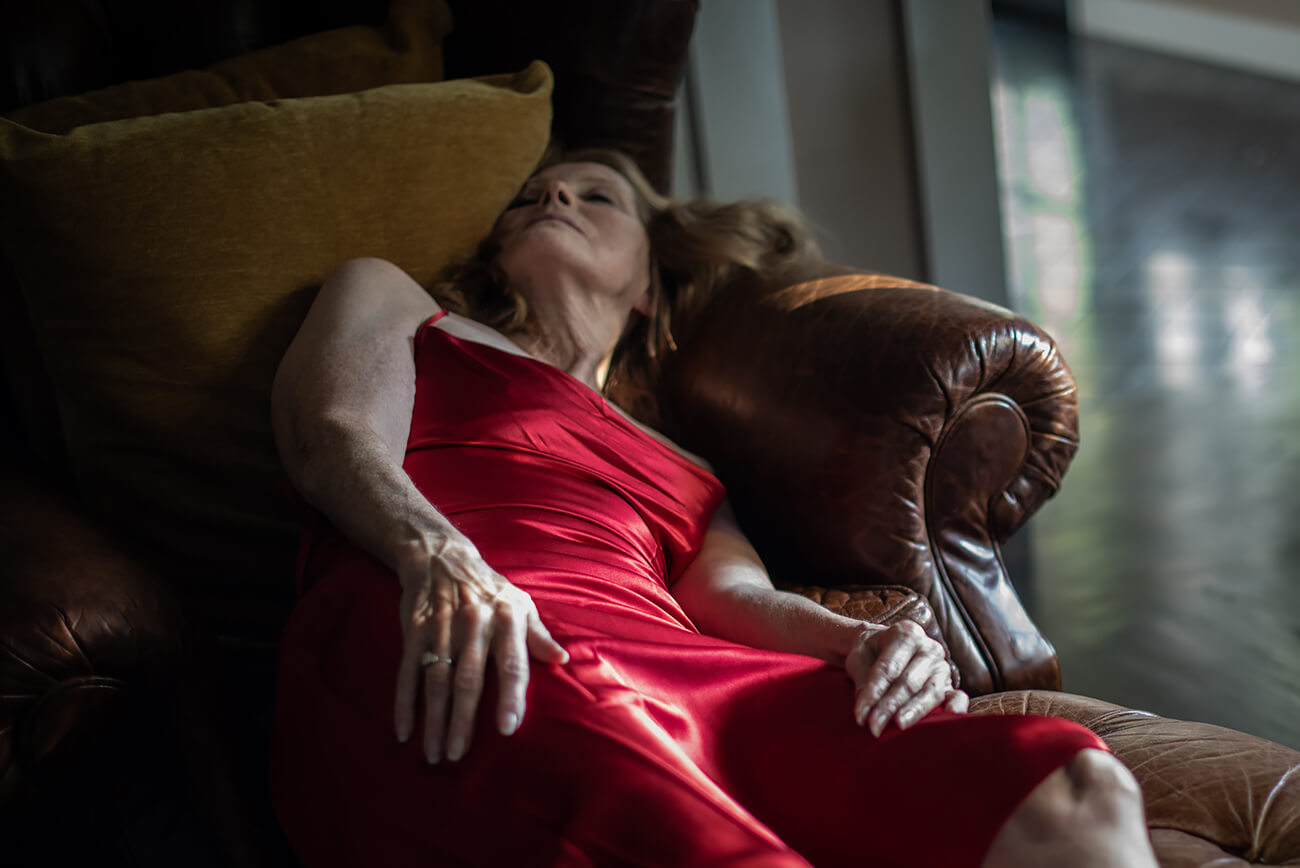
The Red Purse © Jacque Rupp
The Red Purse is about loss and transition and my experiences when I became a young widow. I struggled with sadness, conflict and guilt. I was grieving the loss of my own identity along with the loss of my husband. I felt numb, raw and exposed then suddenly felt very sexual and alive. Anything was possible. These in-congruencies were confusing. My wants and needs had been neglected during his long illness. I was ashamed of my new desires.
Shortly after he died, I bought a red purse, which sat on my dresser for years. I knew I needed to have it, but I did not know why. I never used it. I see now it was a reminder of what I needed in my life as a woman; something feminine, frivolous, and out of character. It gave me permission to fantasize about who I could become during this transition.
All About Jacque Rupp
Osama Elolemy (United Arab Emirates)
One can be gracious at any age.
Wherever you live, whatever life you lead,however simple, if you love yourself it will show – you will beam with beauty.
Don’t wait for later! Now is the time to adorn yourself with your special possessions.
All About Osama Elolemy
Lynn Gilbert (USA)
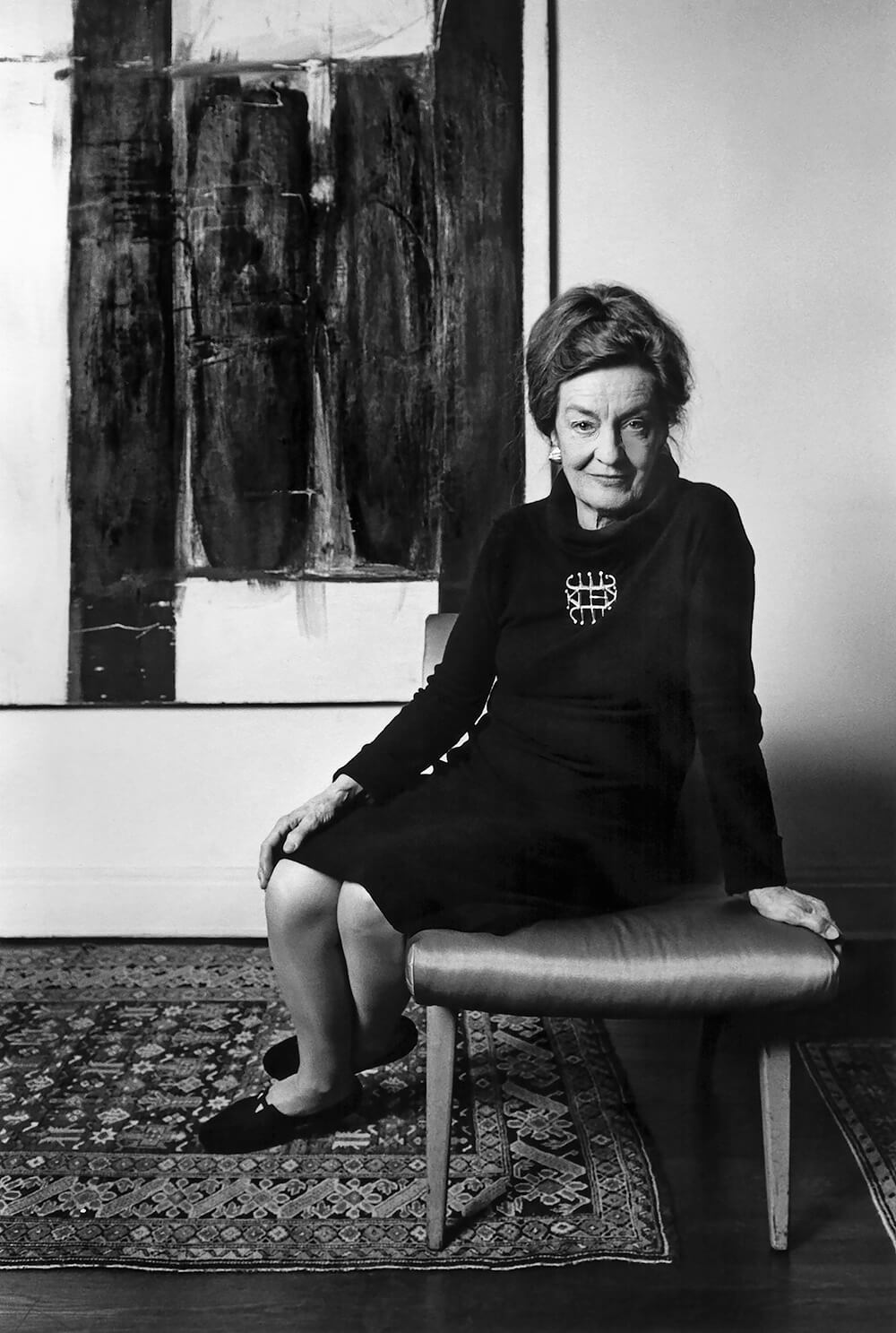
Dorothy Canning Miller © Lynn Gilbert
A curator for MOMA who created seminal exhibitions of emerging artists. who became the giants of American art.
In the mid 20th century six women, Louise Nevelson, Alice Neel, Dorothy Miller, Helen Frankenthaler, Tatyana Grossman, and Betty Parsons, pursued careers in the arts where only men succeeded. They helped shape the American landscape in the arts.
Today women’s basic rights are challenged again. In the 20th century, these six women who pursued their own vision, represented courage and persistence. Rejected because of gender, now in an historic context, their work is recognized for opening new horizons in art.
All About Lynn Gilbert
